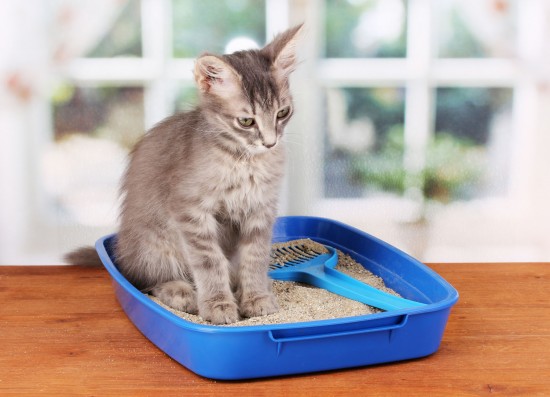

The word “constipation” is used to describe problems with passing faeces or stools, such as straining or having difficulty going to the toilet, not passing stools very frequently, or a total blockage leading to the cat being unable to pass stools at all.
When a cat is constipated, this causes the faeces that are not being passed naturally to build up within the bowel and colon, which in turn leads to the faeces becoming compacted and hardened and worsening the problem. When constipation reaches this stage, it is known as “obstipation,” and left unchecked, obstipation or repeated bouts of constipation can lead to the colon itself becoming distended and unable to push faeces out of the rectum in the normal manner, in a condition known as “megacolon.”
Constipation is, understandably, uncomfortable and unpleasant for your cat, and can be very painful. It is important to be able to identify the onset of constipation in the cat, and know what symptoms to be on the lookout for in order to seek treatment promptly.
There are many potential reasons for constipation in the cat, and these can be both behavioural and medical in nature. If a cat feels unhappy going to the toilet, because they do not have a safe place to go, their litter tray is dirty, or they are unable to go outside if that is what they are used to, this may lead to a reluctance to go to the toilet at all. This is of course both uncomfortable and stressful for your cat, as cats are by nature, very clean creatures, and will often go to great lengths to avoid making a mess or going to the toilet in areas that they are unhappy with .
As well as psychological reasons for a reluctance to go to the toilet, any of the following underlying causes and problems can lead to constipation in the cat too:
Often, constipation in the cat can be hard to spot if your cat normally goes to the toilet outside, which results in your being less aware of their normal toileting routines.
Be on the lookout for the following signs that something is amiss when your cat goes to the toilet:
As well as treating any given bout of constipation and addressing the immediate issue at hand, it is important to investigate the root cause of the problem, which may involve running further tests to identify if an underlying illness is at play, or if your cat’s diet is leading to problems with passing stools comfortably.
Your vet will usually perform a physical examination on your cat, as well as potentially running additional tests, such as a colonoscopy or x ray in the case of potentially severe impactions.
As well as attempting to identify and address the cause of constipation itself, be that behavioural, physical or neurological, your vet may take one or more of the following steps to resolve the immediate bout of constipation itself:
As there are many potential causes of constipation in the cat, theoretically any cat may develop the problem at some point.
Elderly cats are more at risk than younger cats, and any cat fed a diet low in fibre may be particularly prone. Some breeds of cat are more susceptible to suffering from chronic or recurrent constipation than others, such as Manx cats, as the Manx’s signature lack of tail sometimes comes accompanied with other anatomical problems of the spine that can lead to additional problems with the bowel and colon as well.
Copyright © 2005-2016 Pet Information All Rights Reserved
Contact us: www162date@outlook.com